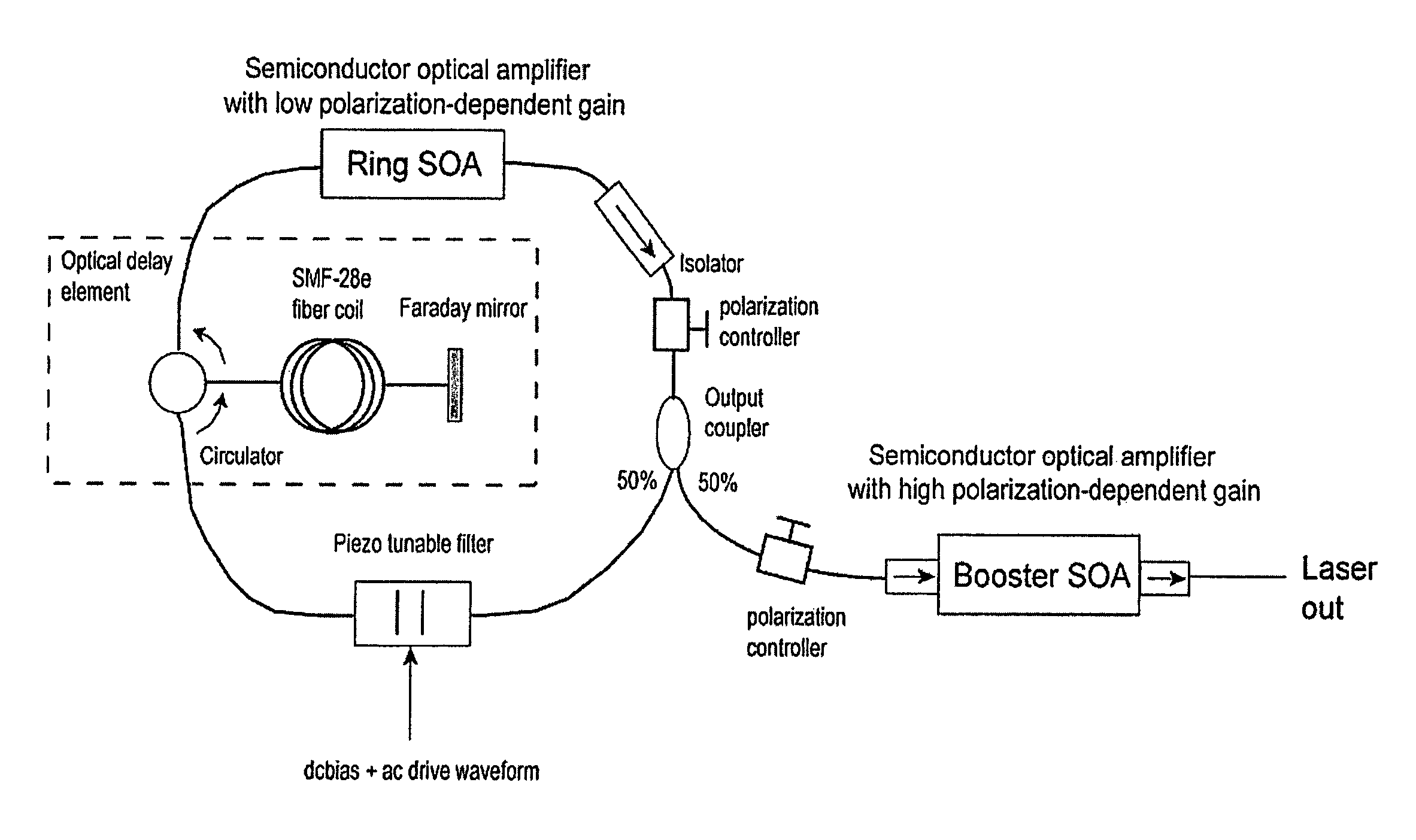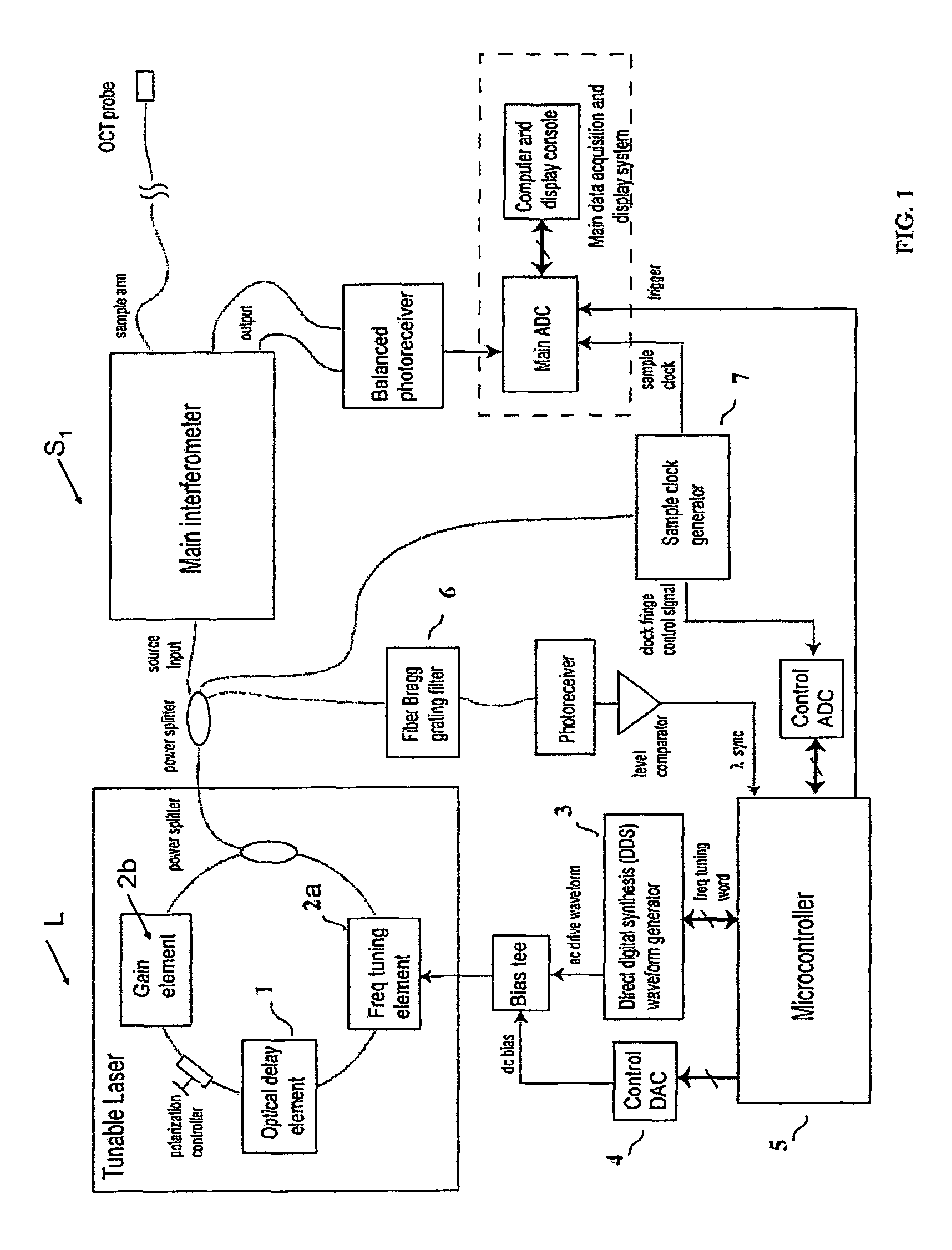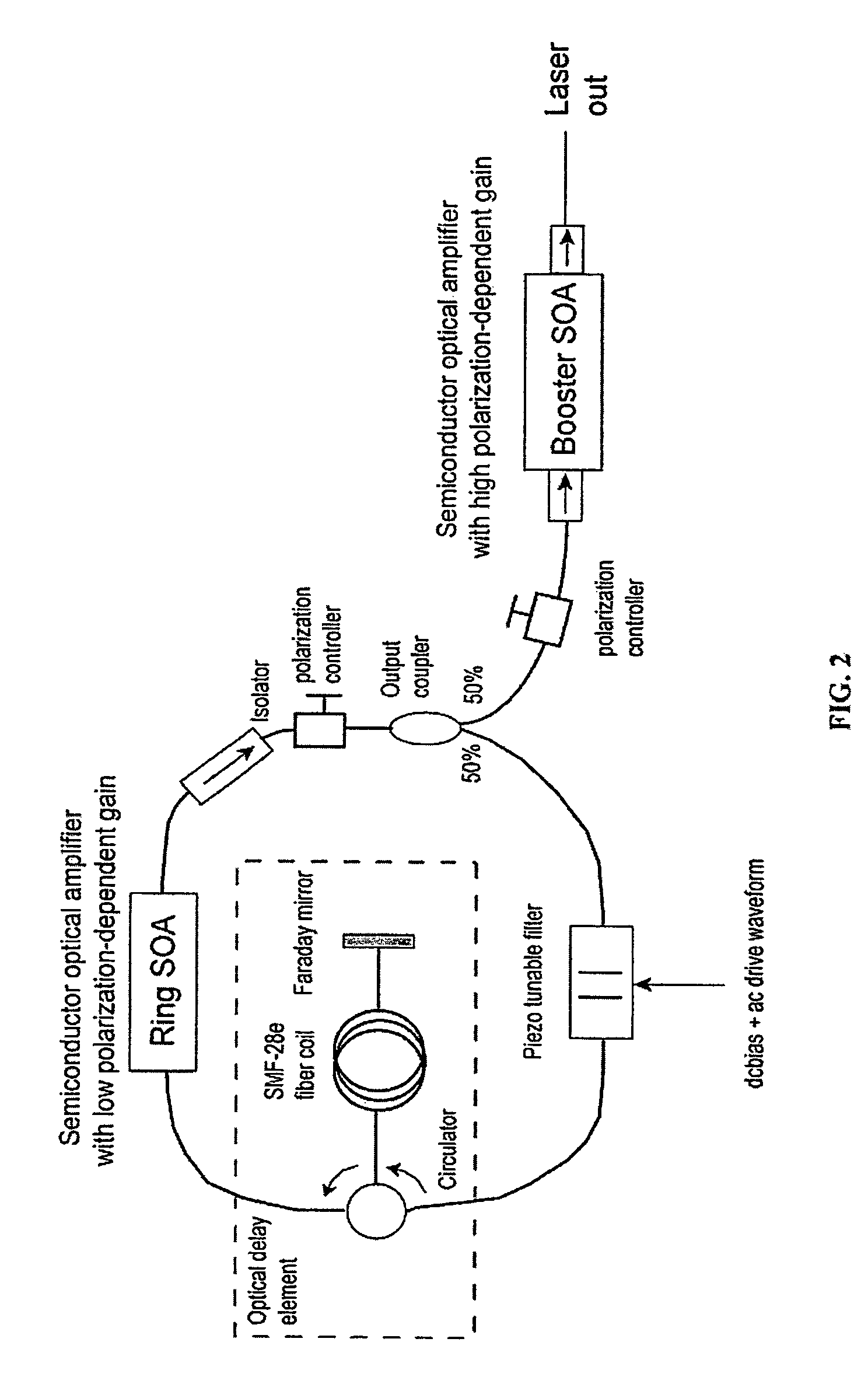Methods and apparatus for swept-source optical coherence tomography
a technology of optical coherence tomography and optical coherence, applied in the field of optical imaging, can solve the problems of limited scan range, phase jitter, poor noise performance, etc., and achieve the effects of low noise, stable, efficient operation, and high speed
- Summary
- Abstract
- Description
- Claims
- Application Information
AI Technical Summary
Benefits of technology
Problems solved by technology
Method used
Image
Examples
Embodiment Construction
the clock fringe control signal (RMS fringe amplitude) for optimum and non-optimum (too low or too high) adjustment of the frequency of the waveform driving the frequency tuning element in the FDML laser according to one specific embodiment of the invention.
[0040]FIG. 14 illustrates a specific embodiment of a feedback control loop for optimization and stabilization of the dc bias voltage applied to the tuning element in the FDML laser according to an illustrative embodiment of the invention.
[0041]FIG. 15 shows the typical highly resonant frequency response of a piezo-actuated Fabry-Perot tunable filter according to an illustrative embodiment of the invention.
[0042]FIG. 16 illustrates the principle of Fourier synthesis on which an exemplary actuator linearization method is based according to an illustrative embodiment of the invention.
[0043]FIG. 17 shows an example of a configuration for synthesized harmonic linearization of a piezo-actuated Fabry-Perot tunable filter according to an...
PUM
 Login to View More
Login to View More Abstract
Description
Claims
Application Information
 Login to View More
Login to View More - R&D
- Intellectual Property
- Life Sciences
- Materials
- Tech Scout
- Unparalleled Data Quality
- Higher Quality Content
- 60% Fewer Hallucinations
Browse by: Latest US Patents, China's latest patents, Technical Efficacy Thesaurus, Application Domain, Technology Topic, Popular Technical Reports.
© 2025 PatSnap. All rights reserved.Legal|Privacy policy|Modern Slavery Act Transparency Statement|Sitemap|About US| Contact US: help@patsnap.com



